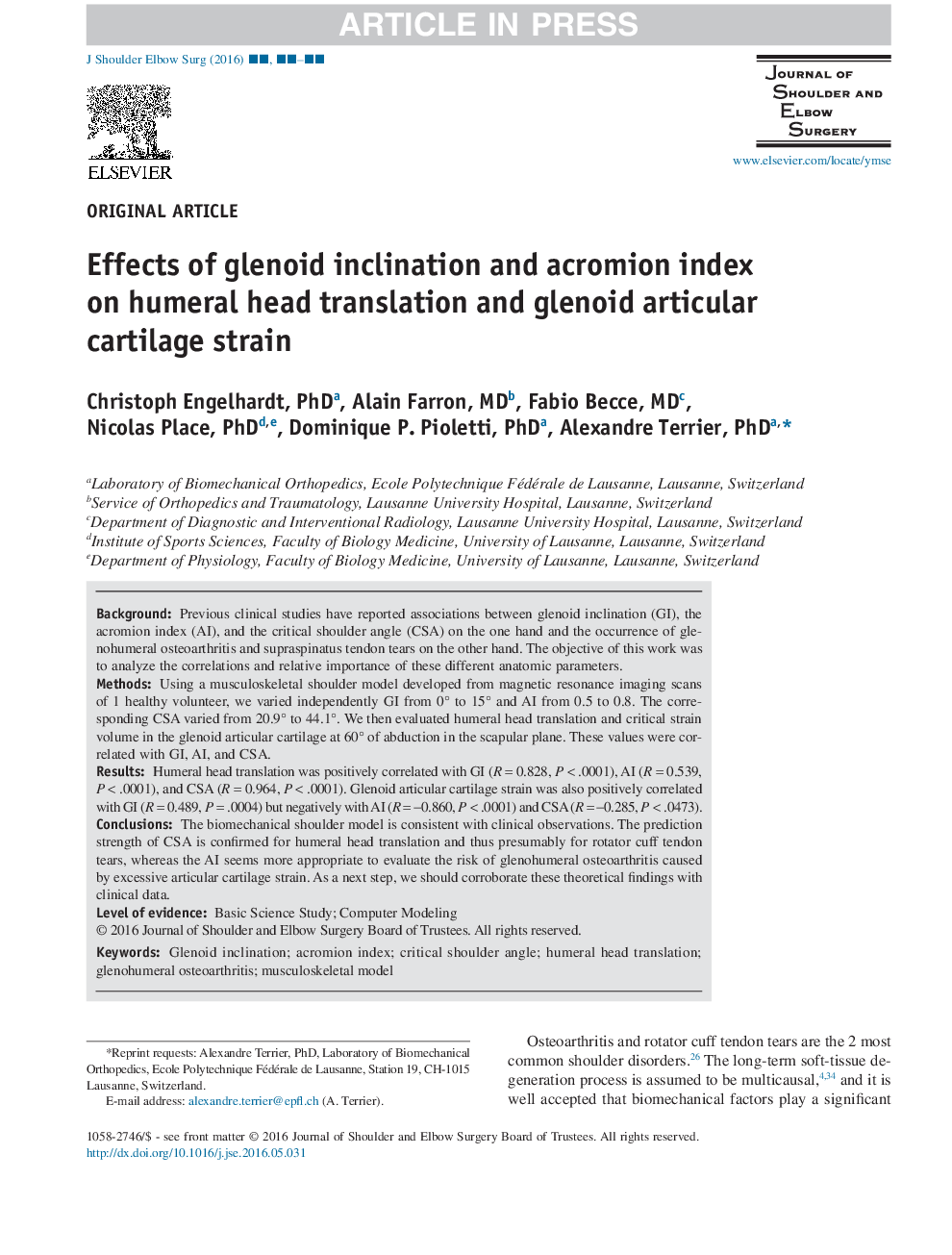| Article ID | Journal | Published Year | Pages | File Type |
|---|---|---|---|---|
| 5710575 | Journal of Shoulder and Elbow Surgery | 2017 | 8 Pages |
Abstract
The biomechanical shoulder model is consistent with clinical observations. The prediction strength of CSA is confirmed for humeral head translation and thus presumably for rotator cuff tendon tears, whereas the AI seems more appropriate to evaluate the risk of glenohumeral osteoarthritis caused by excessive articular cartilage strain. As a next step, we should corroborate these theoretical findings with clinical data.
Keywords
Related Topics
Health Sciences
Medicine and Dentistry
Orthopedics, Sports Medicine and Rehabilitation
Authors
Christoph PhD, Alain MD, Fabio MD, Nicolas PhD, Dominique P. PhD, Alexandre PhD,
